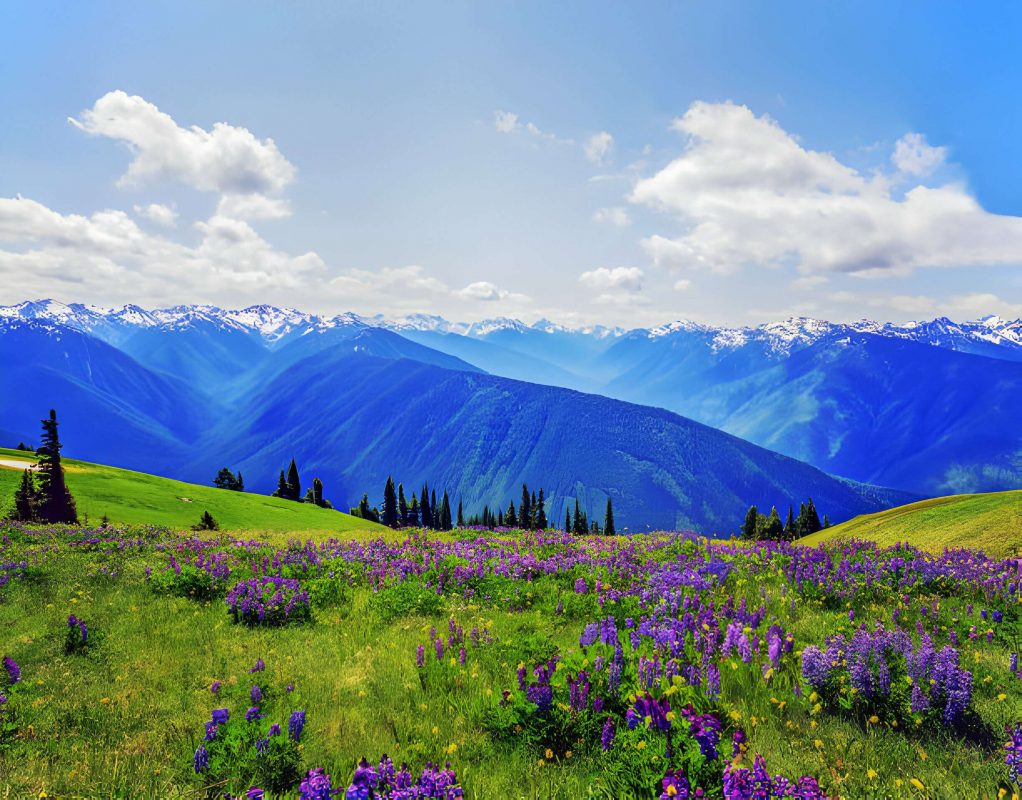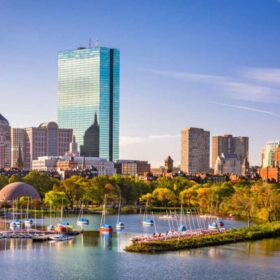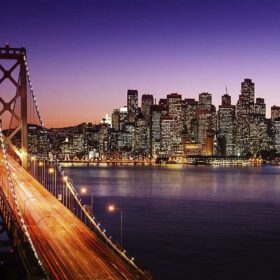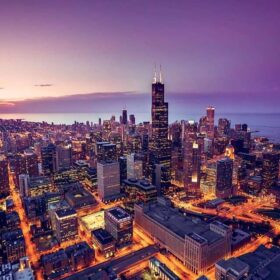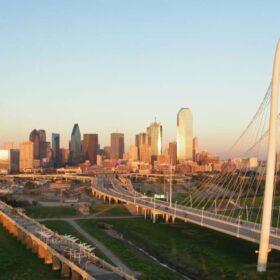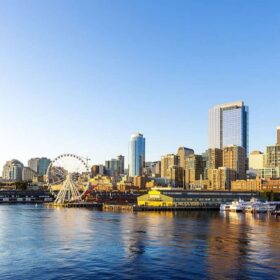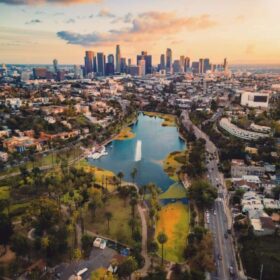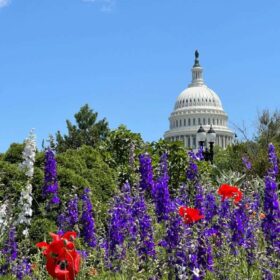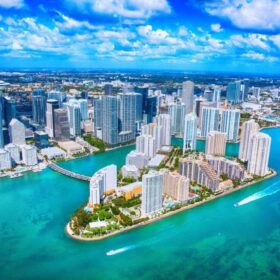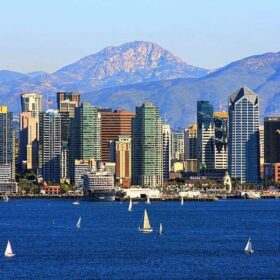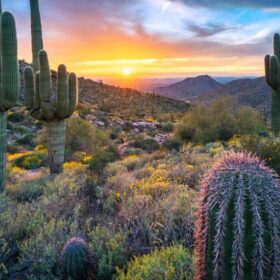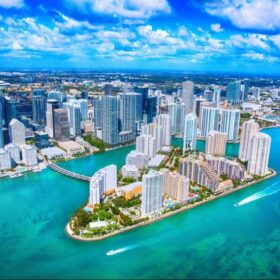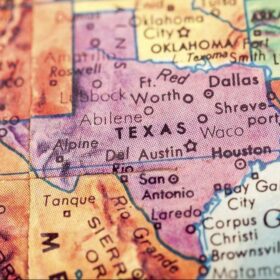Nestled against the Pacific Ocean on the Olympic Peninsula in northwest Washington State, Olympic National Park entices millions of visitors annually with its untamed landscapes. From glaciated mountain peaks to a rugged coastline, including one of North America’s most impressive temperate rain forests, Olympic is a remote, rugged destination that ranks high on the list for those seeking adventure.
Planning a visit to Olympic National Park can be daunting given the multitude of exciting activities. The absence of roads traversing the park’s wild interior means that visitors often circumnavigate the peninsula on a multi-day journey. Charming towns, numerous campgrounds, and hiking trails dot all sides of the peninsula, offering one memorable experience after another.
Exploring the peninsula is possible year-round, but arguably the optimal time to experience Olympic National Park is between May and September. During this drier season, substantial crowds converge on the park, making planning with reservations and necessary permits advisable.
Prepare for an unforgettable adventure in one of America’s wildest national parks with our comprehensive guide to Olympic National Park and the Olympic Peninsula.
1. Port Angeles
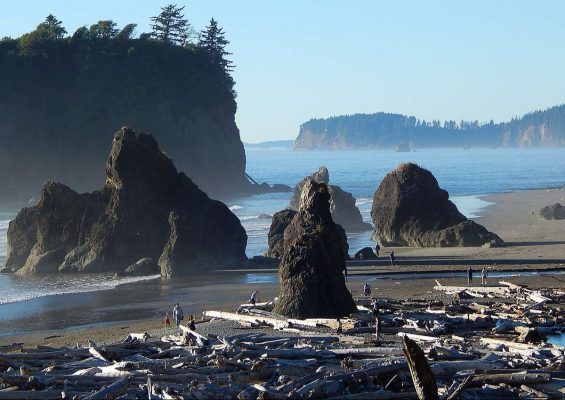
Situated in the delightful town of Port Angeles on the northern coast of the peninsula, the primary Olympic National Park Visitor Center serves as an invaluable resource for first-time visitors eager to delve into the diverse ecosystems and myriad activities the park offers. The Visitor Center in Port Angeles is the main hub where rangers are readily available to address any inquiries from visitors.
Within the Visitor Center, the Wilderness Information Center facilitates the issuance of backcountry permits for those keen on exploring the wilderness. While the Port Angeles Visitor Center stands out as the largest, additional stations are scattered at key locations, including the Hoh Rain Forest, Hurricane Ridge, and Kalaloch.
However, Port Angeles offers more than just the Olympic National Park Visitor Center. Visitors can explore attractions such as the Olympic Discovery Trail and the crescent-shaped sand spit known as Ediz Hook. This waterfront city not only boasts various points of interest but also serves as a convenient starting point, providing numerous hotels and restaurants.
Accommodation: Best Lodging Options for Olympic National Park
2. Hike to Marymere Falls
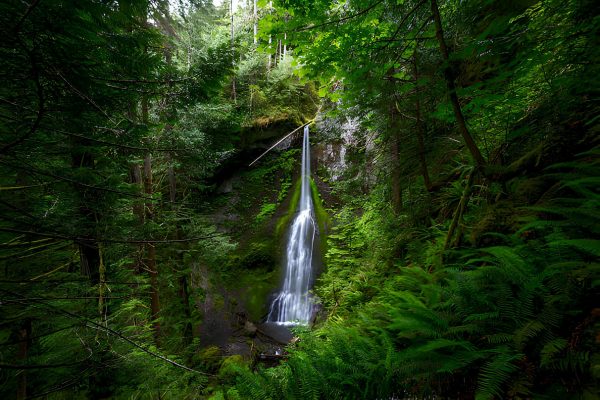
Among the best hiking trails in Olympic National Park, the journey to Marymere Falls consistently stands out as a favored option for families. Located on the northwest side of the park near Lake Crescent, this trail is easily accessible from Port Angeles, requiring a 20-mile drive.
The appeal for families may stem from the trail’s relatively short length, demanding less than a mile of hiking to reach the impressive 90-foot falls. However, it is the captivating spectacle of cascading water that truly distinguishes Marymere Falls. Visitors are encouraged to savor this natural marvel from the designated viewing area.
Marymere’s popularity is further heightened by its strategic position within the park. Lake Crescent, a major tourist attraction, boasts several campgrounds and additional hiking trails in the surrounding vicinity. For those seeking a more demanding adventure, the nearby Mount Storm King Trailhead offers a four-mile round trip and affords a breathtaking panorama across the lake.
Read More: Best Waterfalls in Washington State
3. Hoh Rain Forest
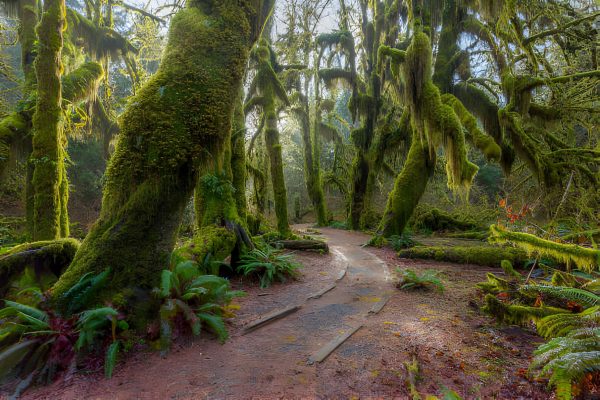
The copious rainfall on the western side of Mount Olympus, situated at the park’s core, contributes to a luxuriant environment, and preserves some of the last remaining temperate rainforests in the country.
Many visitors gravitate toward the Hoh Rain Forest to immerse themselves in this expansive natural wonder, and with good reason. This densely overgrown area is incredibly captivating, showcasing a myriad of green hues.
Exploring the surroundings provides visitors with various options, such as the family-friendly Hall of Mosses and Spruce Nature Trail. These level pathways create a brief loop around the rich landscape encircling the Hoh Rain Forest Visitor Center.
Alternatively, the globally renowned Hoh River Trail spans 17 miles from the Visitor Center to the terminal moraine of the Blue Glacier on Mount Olympus. The initial 13 miles of the trail offer a moderate and mostly flat terrain, tracing the meanders of the Hoh River, making it an enjoyable family-friendly hike with an out-and-back experience.
4. Spend the Night in the Lake Crescent Lodge
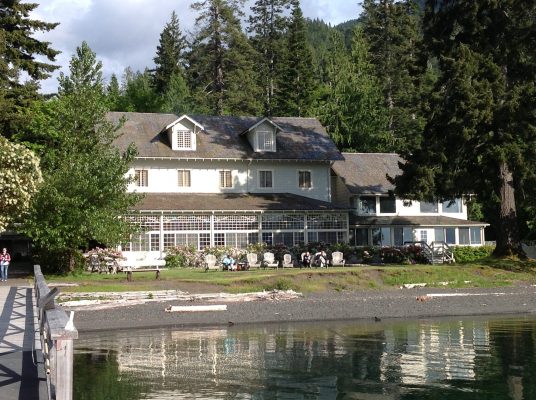
Lake Crescent is visible from Highway 101, approximately 20 miles west of Port Angeles, on the northern edge of the peninsula. This lake, shaped by glaciers, gleams with natural splendor and entices visitors year-round. The adjacent historic Lake Crescent Lodge provides an enchanting accommodation option.
Lake Crescent Lodge offers diverse rooms and suites tailored to different travel preferences. Original lodge rooms, retaining their timeless charm, lack modern amenities like internet access. Alternatively, larger rooms, suites, and cabins with fireplaces are also on offer.
Read More: Best Lakes in Washington to Visit
5. Sol Duc Hot Springs
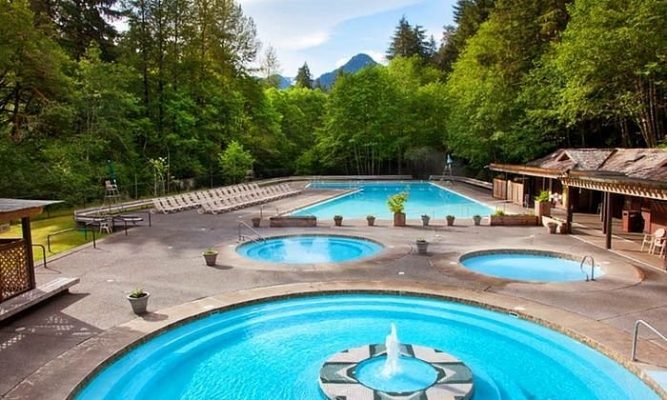
Sol Duc Hot Springs, located within Olympic National Park, is a resort and hot springs managed by a concessionaire. Renowned for its therapeutic waters, the facility accommodates guests in modest cabins, a lodge, and an adjoining campground, all nestled beside a picturesque river. Overnight stays are available, and day-trippers can pay a fee to partake in the water’s rejuvenating benefits.
Adjacent to the resort, the Sol Duc Falls trailhead beckons adventurers into a lush alpine setting. Permit holders can further explore the captivating Seven Lakes Basin within the park.
6. Hurricane Ridge
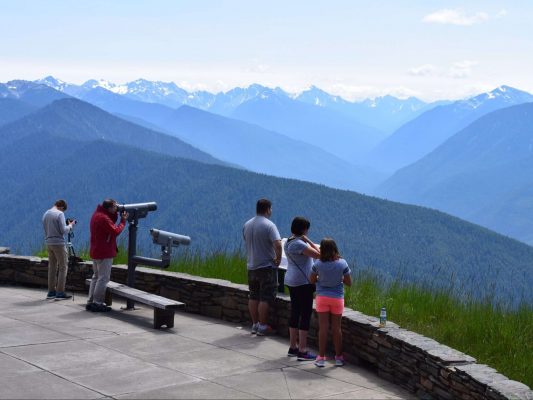
A picturesque 20-mile-long road stretches from Port Angeles to the Hurricane Ridge Visitor Center, located at an elevation of 5,200 feet and without overnight accommodations.
This renowned destination offers breathtaking vistas of the glacier-clad Olympic Mountains and provides sweeping views across the Strait of Juan de Fuca to Vancouver Island in Canada. Particularly stunning in late summer, the alpine meadows are adorned with lupines and delicate valerian.
For those starting their exploration of Olympic National Park from Port Angeles, Hurricane Ridge is often the initial point of interest. The Heart O’ the Hills Campground, situated at the base of the road leading to Hurricane Ridge, is a favored camping spot conveniently close to town.
7. Visit Neah Bay
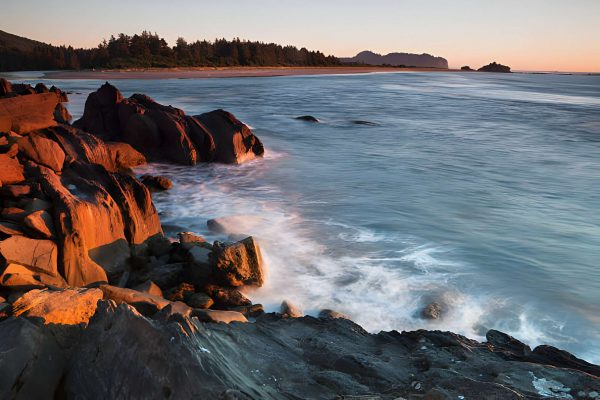
Situated on the far northwestern tip of the Olympic Peninsula, Neah Bay is a small community overlooking the Strait of Juan de Fuca. Serving as the entrance to Cape Flattery, the most northwestern point in the contiguous United States, accessible via a hiking trail.
The Makah Cultural & Research Center in the community is dedicated to the preservation of the Makah language through diverse programs. Additionally, the center manages the Makah Museum, housing a permanent collection of exhibits that delve into the area’s rich local history.
Read More: Best Small Towns to Visit in Washington
8. Catch the Sunset at Rialto Beach
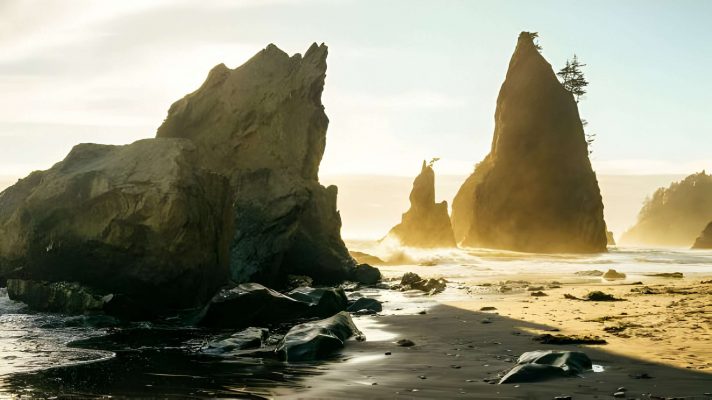
Rialto Beach, located inland from the Mora area of the park, provides a captivating showcase of the wild Olympic Coast. Stretching north from the Quillayute River, this picturesque coastline unfolds with striking sea stacks and the ever-changing tide, offering a favored setting for beachcombing and immersing oneself in the untamed surroundings.
Embark on a 1.5-mile hike north along Rialto Beach to reach the appropriately named Hole-in-the-Wall. This colossal rock formation features a distinctive tunnel eroded into the rock, creating a breathtaking spectacle, especially during low tide. The area teems with marine life when the water recedes.
The sunsets add another layer of splendor to the experience. The Mora Campground, situated near the end of Mora Road and the beach, stands as a popular accommodation choice for those looking to spend the night near Rialto Beach. Additionally, visitors can obtain backpacking permits to camp along the beach, nestled in the woodland overlooking the ocean.
Read More: Best Beaches in Washington State to Visit
9. Pitch a Tent or Park an RV
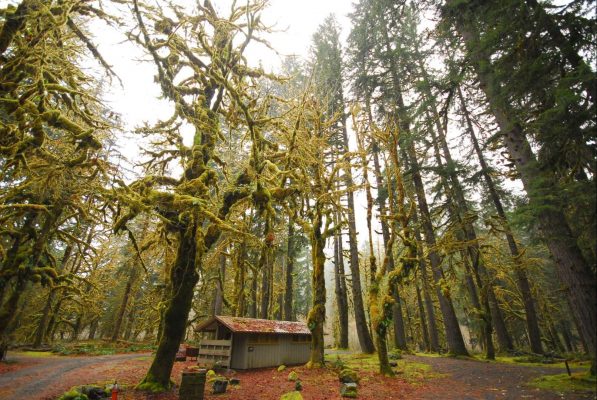
Throughout the year, Olympic National Park offers numerous auto campgrounds, with favorites like Heart O’ the Hills, the Hoh Rain Forest, and South Beach Campgrounds being among the most frequented. The best campgrounds in Olympic National Park provide immediate access to a breathtaking natural setting.
It is highly recommended to make advanced reservations, where possible, especially during the summer months and particularly on weekends.
10. Make a Base Camp in Forks
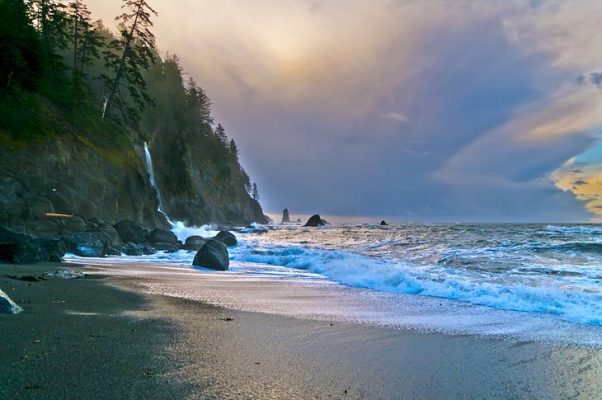
Situated in the coastal western part of the national park, Forks serves as the primary hub for the surrounding region. Numerous scenic driving tours are available to explore the area’s hiking trails, waterfalls, and hot springs.
Forks is an excellent starting point for accessing the beaches near the coastal village of La Push. The Forks Timber Museum provides an opportunity to delve into the extensive knowledge of loggers, logging history, and the equipment utilized in the forest industry.
FAQs
Q: Is Olympic National Park suitable for all ages?
A: Yes, the park offers activities and trails suitable for visitors of all ages.
Q: Are there any entrance fees to the park?
A: Yes, there is an entrance fee, but it varies depending on the type of pass and the duration of your visit.
Q: What is the best time to visit for wildlife sightings?
A: Wildlife is active year-round, but spring and fall offer excellent opportunities for sightings.
Q: Can I bring my pet to Olympic National Park?
A: While pets are allowed in some areas, they are restricted in many. Check Park regulations before bringing your pet.
Q: Are there accommodations within the park?
A: Yes, the park offers various accommodation options, including campgrounds and lodges.

